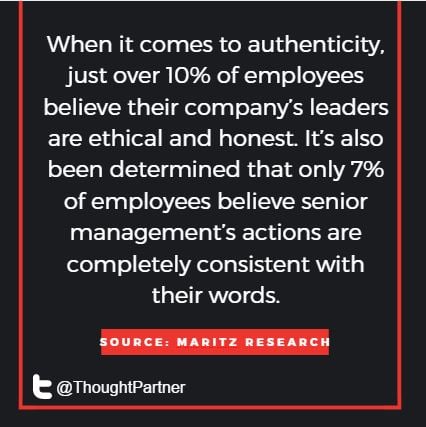A Communication Platform Can Help Leaders Codify Who They Are and What’s Important
A communication platform can help leaders codify who they are and what’s important
In addition to having leaders bring their authentic selves to their work, packing a leader’s narrative into a platform can also be extremely effective. What we call the leadercommunicator platform, is a management and communication tool for leaders and especially useful for those who are new in position, new to the company, and/or leading organizations through significant change. The platform helps leaders establish a line of sight to what they care about so employees know what’s expected and are in the best position to take action and deliver results.

A leader’s platform is the core set of messages and personalized stories that capture his or her business goals, case for change and overall narrative along with his or her personal strengths, style, and expectations. It’s used by leaders (and their communications teams) in formal and every day communications to drive alignment and accelerate performance.
The platform should address the most common questions employees have for leaders, including:
- How did you get to where you are?
- How do you want people to know you? What makes you tick?
- What people or experiences in your career have been impactful for you?
- What are your expectations of employees?
- What should they expect of you?
- On what do you want to put a stake in the ground?
- What’s your vision? Why should various audiences believe in you and the vision?
- Who are we and what do we do?
- What are our business goals? Business strategies?
- What initiatives will drive the business today? In the future?
- What are the new behaviors you expect employees to perform successfully to achieve your results? How will we get the results needed?
- What does success look like?
- How will we measure success?
- What needs to change to make this happen?
For many leaders, the answers to these questions – especially the questions about their personal style, motivation and goals – require significant reflection. A leader who hasn’t done much work understanding himself might struggle with answering some of these questions, or pay lip service to them, which is all the more reason the process of developing a platform can be hugely valuable and enlightening. Here’s where this can’t be a check-off-the-box activity, but rather an opportunity to reflect on how one uses his or her communication superpowers for good; to lead and to inspire others to greatness.
Purposeful actions should support these important messages
The answers to the above questions also should be coupled with purposeful actions that support these all-important messages and form the basis for what the leader talks about and communicates regularly – irrespective of the method. Words and actions need to be in sync for authentic communications that build trust.
The best platforms set the leader’s narrative and actions for the year and allow flexibility to customize the messages as needed for specific business and communication situations. Once complete, the platform is then the centerpiece of a larger executive communication plan that helps the leader extend his or her visibility, reach and message in efficient and effective ways that make sense based on who they are.
For example, Steve Crawford, Chief Technology Officer at Eastman Chemical, is especially comfortable and at his best in small group settings with front-line employees. This is where he’s most effective at creating meaningful dialogue and gaining valuable insights that help guide the direction of the department. “It’s a significant time investment compared to a town hall, for example,” Crawford says. “But the dialogue created and value for the employees and me far outweighs the time investment.” In recent feedback on his leadership and communication skills, Crawford was lauded for these dialogue-rich meetings, which employees found extremely useful. They also commented on his approachability and strong level of trust in his leadership.
For the communication professional, a framework like a platform – executed as part of a larger communication plan – will help drive efficiencies and save time. Most importantly, it will improve the leader’s ability to be authentic and highly effective. This sets the stage to help them achieve things they never thought possible.
In the end, the goal should always be to uncover the leader’s best and true self – no imitations needed.
How might a platform help you be consistent in your communications and more of who you are?
-David Grossman
Did you read the first post in this series? In case you missed it, click here.
This post was originally published by David Grossman at IABC.com


Comments on this post